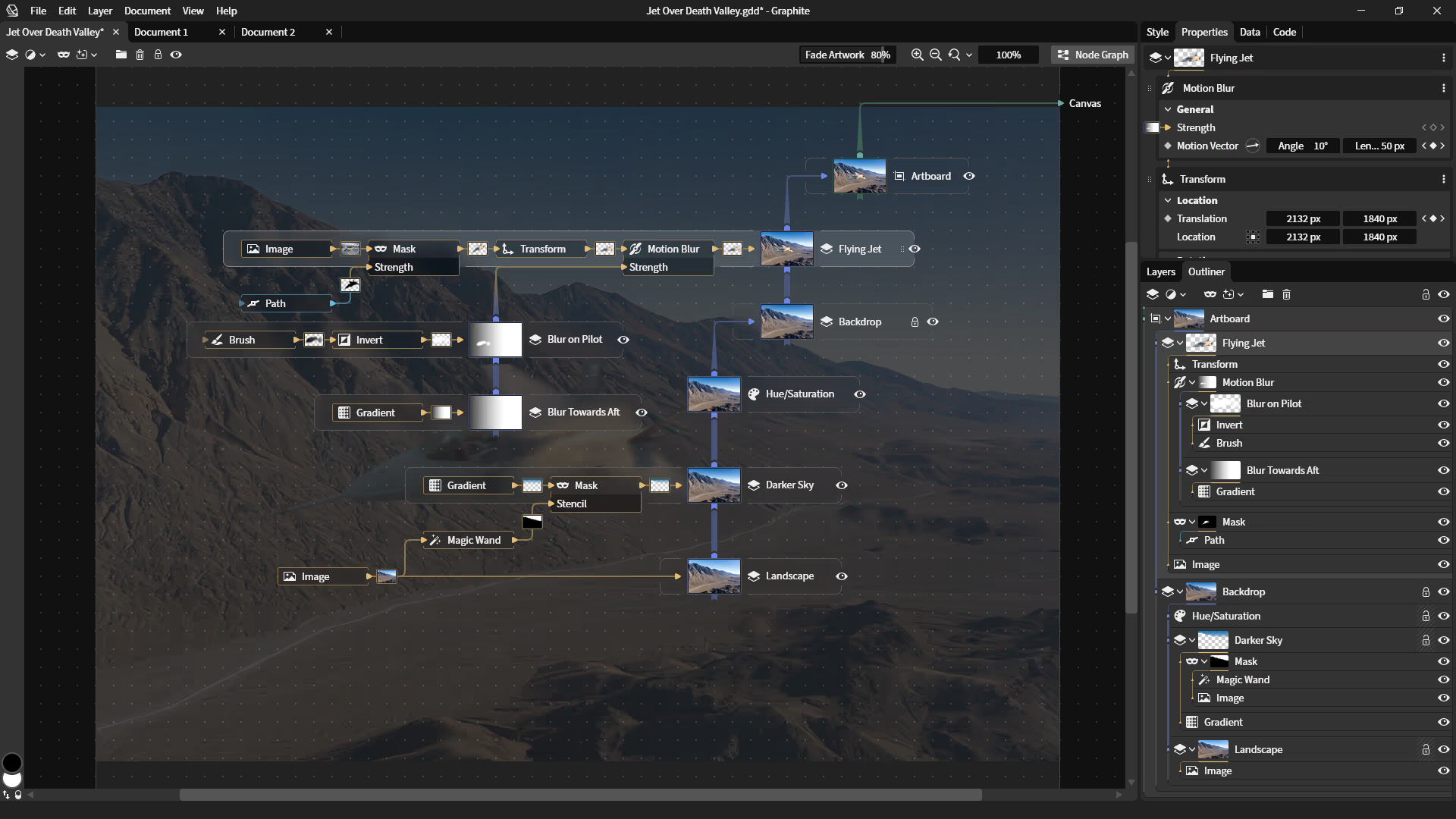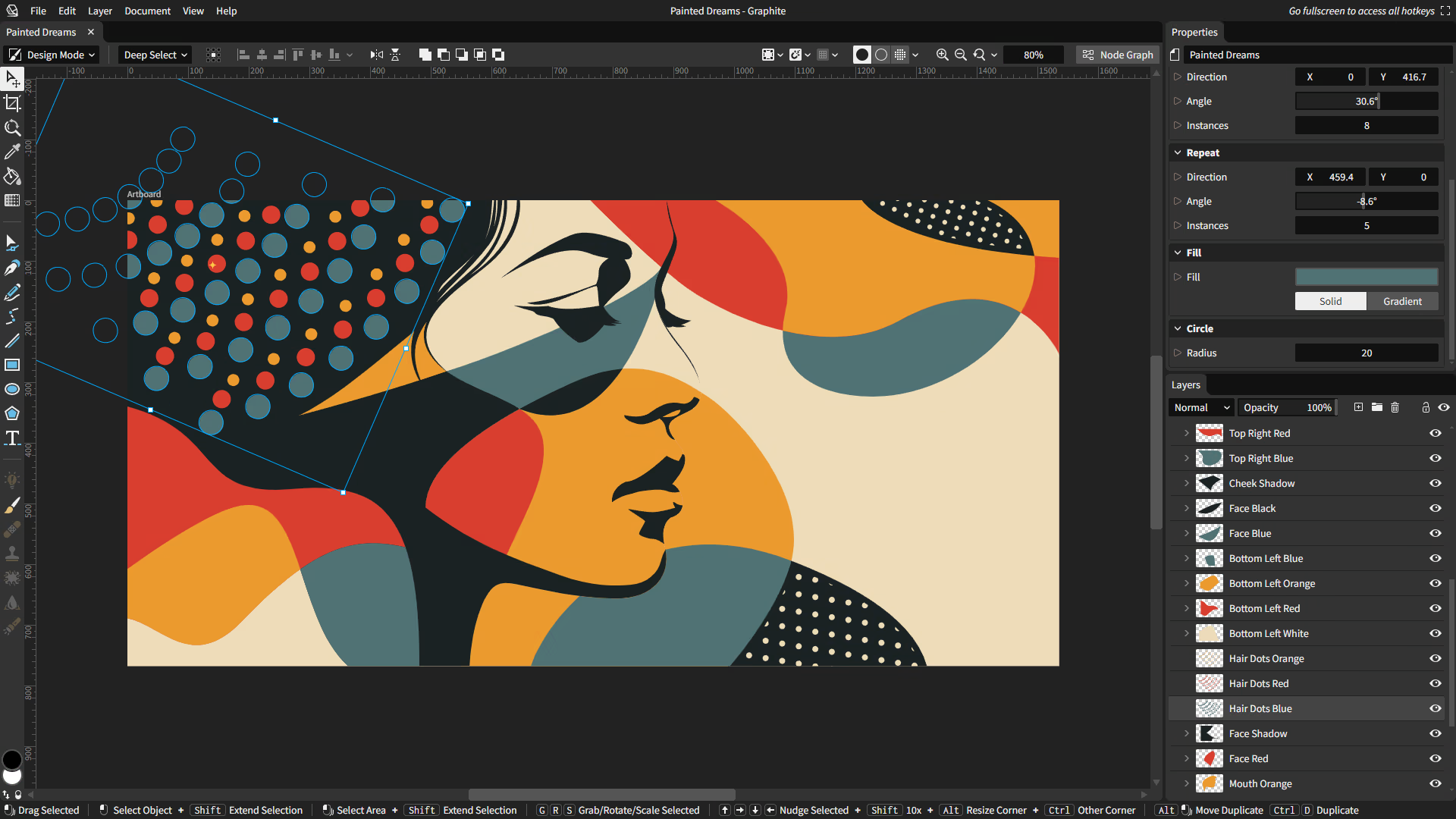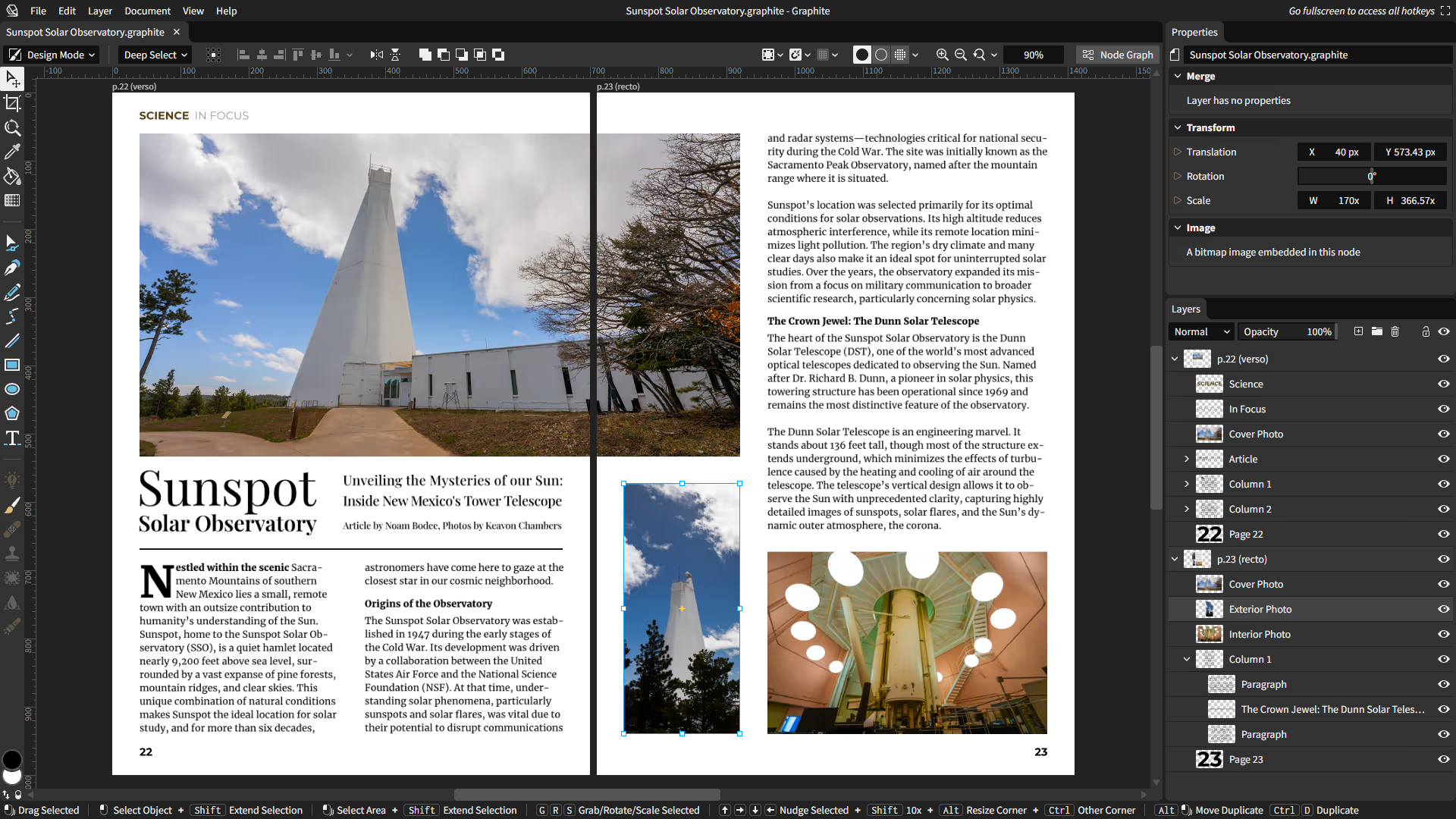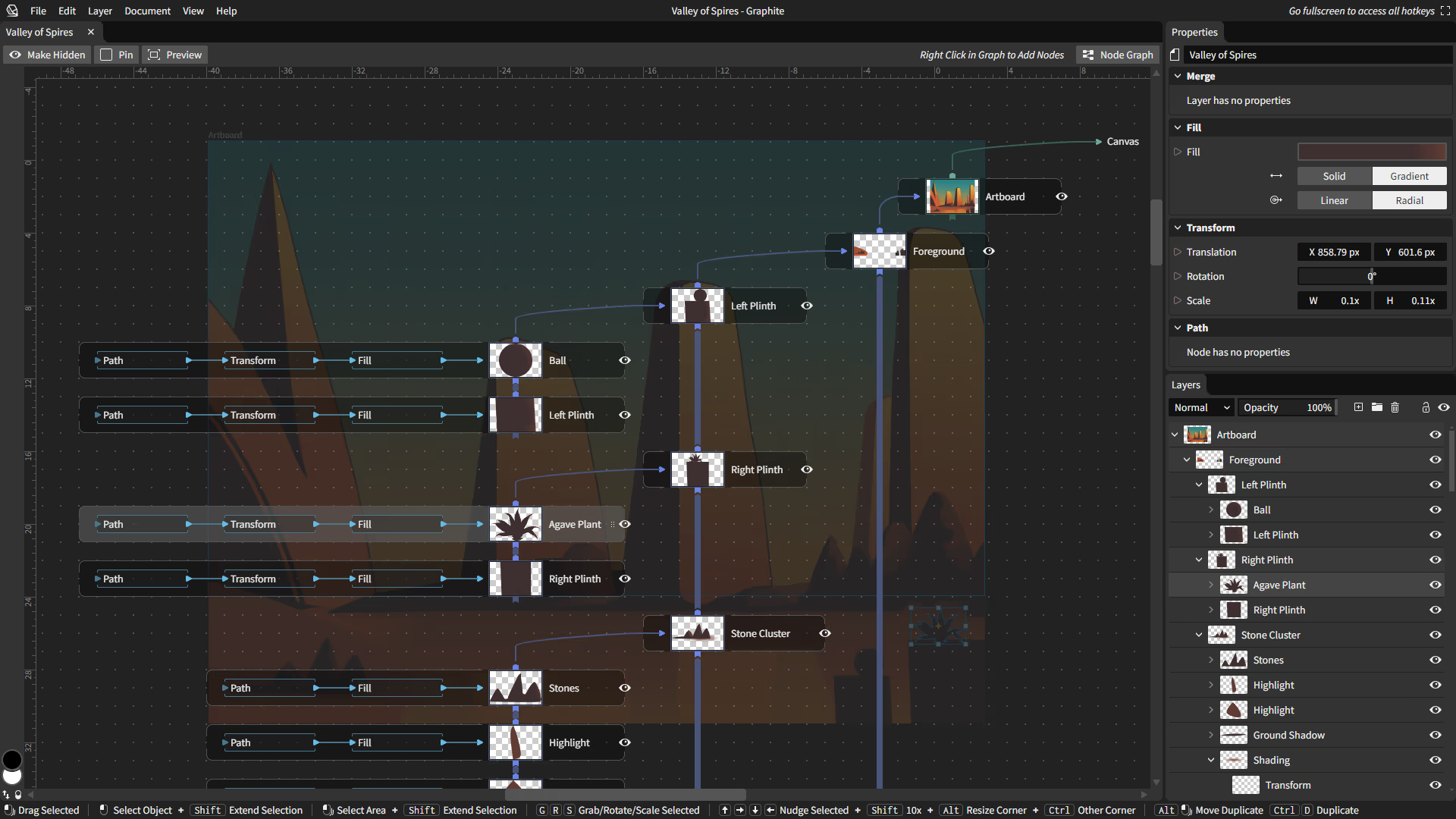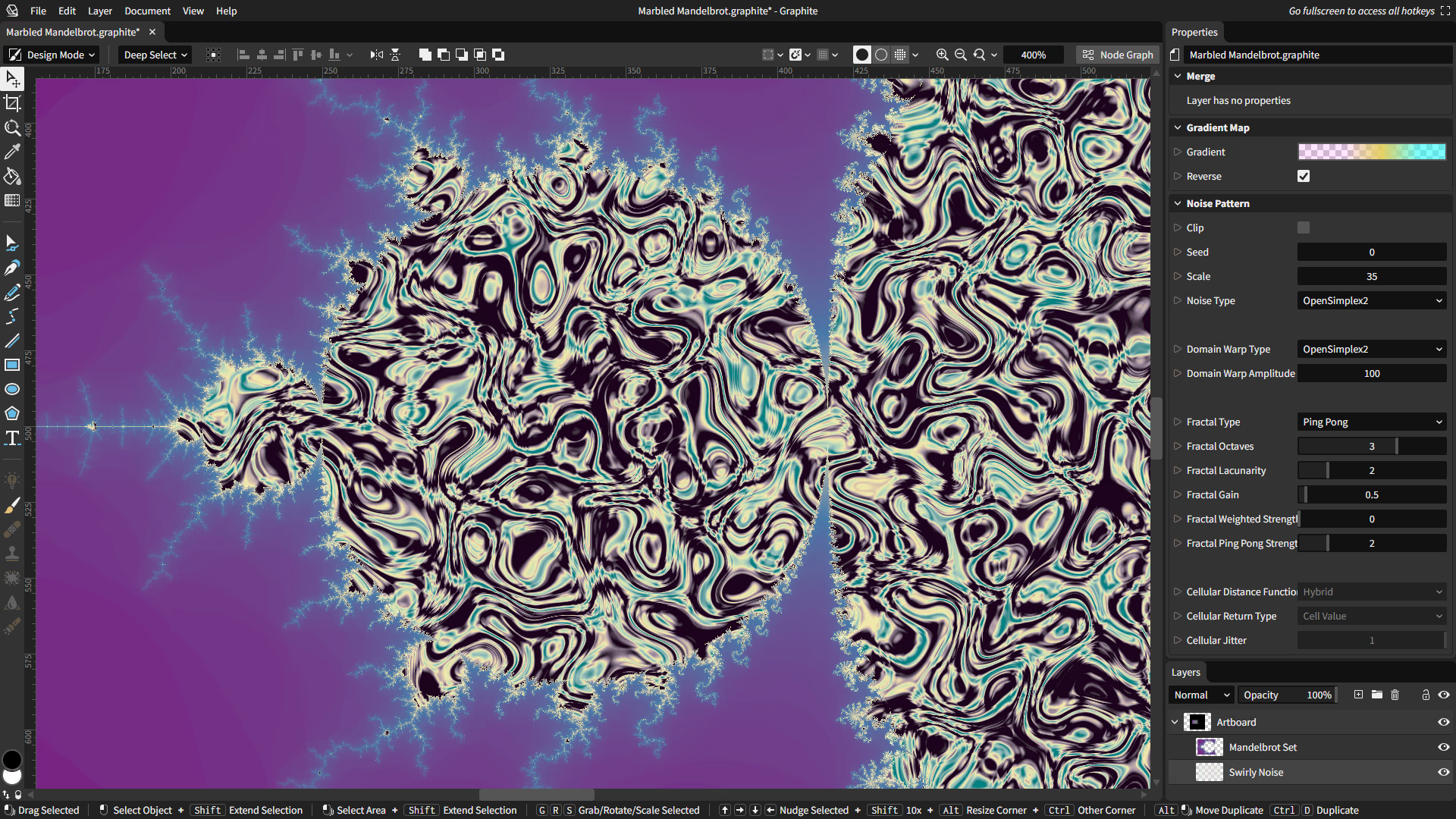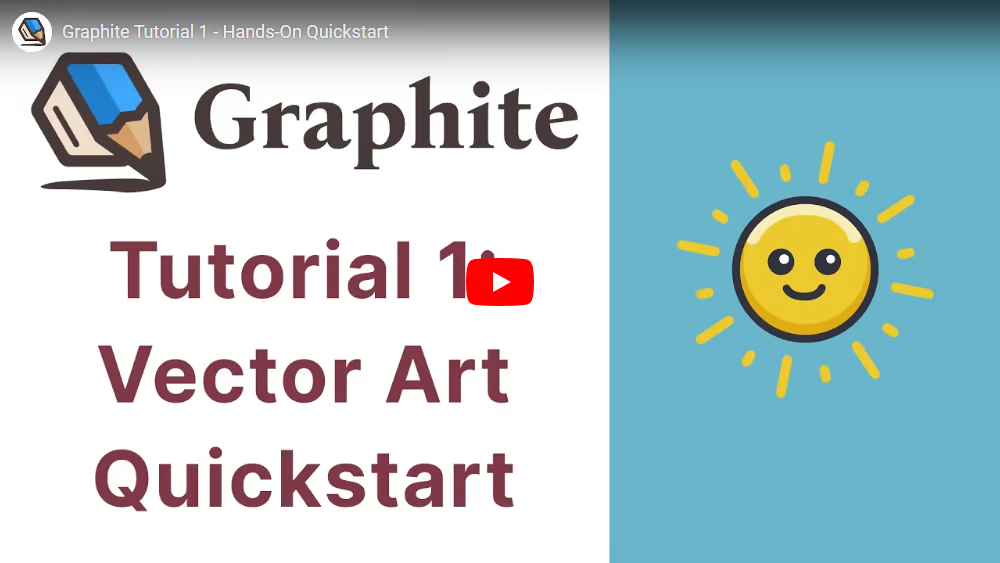
Your procedural toolbox for 2D content creation
Graphite is a free, open source vector and raster graphics engine, available now in alpha. Get creative with a nondestructive editing workflow that combines layer-based compositing with node-based generative design.
Painted Dreams — Made using nondestructive boolean operations and procedural polka dot patterns
Design for a magazine spread, a preview of the upcoming focus on desktop publishing
Valley of Spires — All layer stacks are represented, under the hood, by a node graph
Mandelbrot fractal filled with a noise pattern, procedurally generated and infinitely scalable
Coming soon: mockup for the actively in-development raster workflow with new nodes for photo editing
Software overview
Starting life as a vector editor, Graphite is evolving into a generalized, all-in-one graphics toolbox that's built more like a game engine than a conventional creative app. The editor's tools wrap its node graph core, providing user-friendly workflows for vector, raster, and beyond.
One app to rule them all
Stop jumping between programs— upcoming tools will make Graphite a first-class content creation suite for many workflows, including:
Current features
Presently, Graphite is a lightweight offline web app with features primarily oriented around procedural vector graphics editing.
Upcoming features
Desktop-first and web-ready
Graphite is designed principally as a professional-grade desktop application that is also accessible in-browser for quick, casual usage.
Where's the download? Windows, Mac, and Linux apps should be available around the end of 2024. Until then, you can install it as a PWA.
Developing and maintaining a native app on so many platforms is a big task. A fast, sloppy approach wouldn't cut it, but engineering the right tech takes time. That's why first supporting just web, the one platform that stays up-to-date and reaches all devices, was the initial priority.
Once it's ready to shine, Graphite's code architecture is structured to deliver native performance for your graphically intensive workloads on desktop platforms and very low overhead on the web thanks to WebAssembly and WebGPU, new high-performance browser technologies.
The power of proceduralism
Graphite is the first and only graphic design package built for procedural editing — where everything you make is nondestructive.
Explore creative possibilities
Save hours on tedious alterations and make better creative choices. Graphite lets you iterate rapidly by adjusting node parameters instead of individual elements.
Scatter circles with just a couple nodes...
Want them denser? Bigger? Those are sliders.
Want a different placement area? Just tweak the path.
Open this artwork and give it a try yourself.
Mix and morph parameters
Nondestructive editing means every decision is tied to a parameter you can adjust later on. Use Graphite to interpolate between any states just by dragging sliders.
Blend across color schemes. Morph shapes before they're scattered around the canvas. The possibilities are endless.
Open this artwork and give it a try yourself.
Geared for generative pipelines
Graphite's representation of artwork as a node graph lets you customize, compose, reuse, share, and automate your content workflows:
Support the mission
If you aren't paying for your free software, someone else is covering your share. Chip in so Graphite can remain sustainable and independent.
Ready to dive in?
Get started with Graphite by following along to a hands-on quickstart tutorial.
Recent news / More in the blog
Graphite progress report (Q4 2024)
Graphite, a new open source 2D procedural graphics editor, has spent October-December on a multitude of smaller quality-of-life features and bug fixes, making Graphite a usable alternative to vector graphics software such as Inkscape for the web. All Q4 2024 commits may be viewed in this list and all noteworthy changes are detailed below.
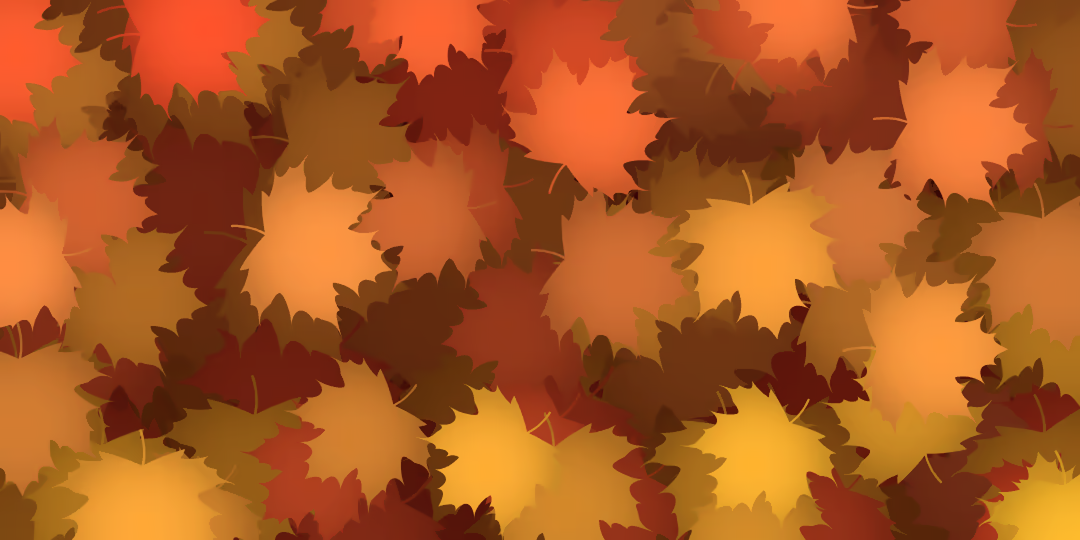
Graphite progress report (Q3 2024)
Graphite, a new open source 2D procedural graphics editor, has spent July–September building major improvements to performance, node graph organization, nondestructive path editing, a new render engine, and more helpful nodes, amongst over 100 other features and fixes. This has been the most productive quarter yet in the project's three-year history. Most of our Google Summer of Code student intern projects have already reached their goals, adding to the goodies included in this progress report. All Q3 2024 commits may be viewed in this list and all noteworthy changes are detailed below.
